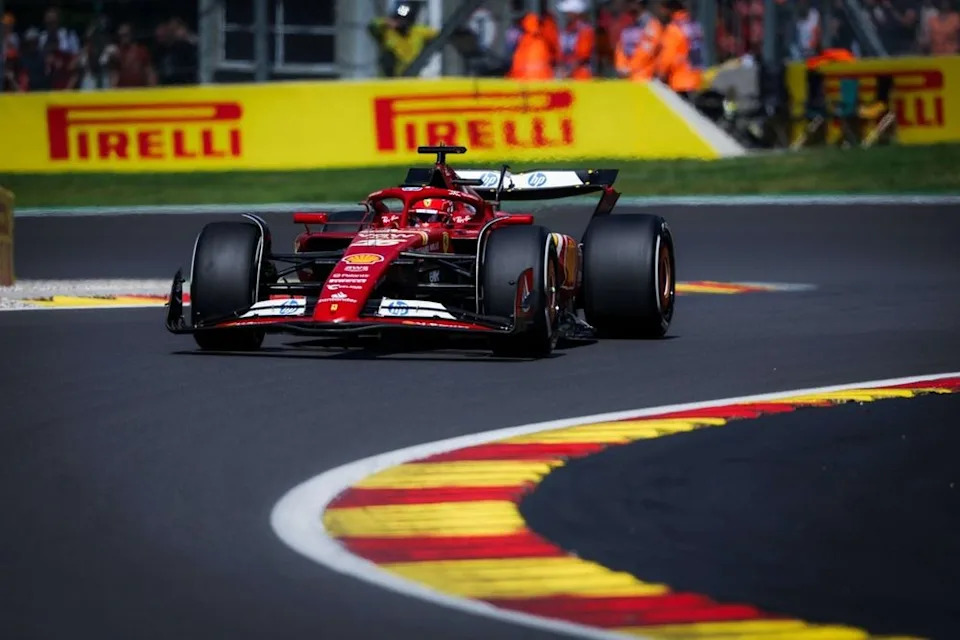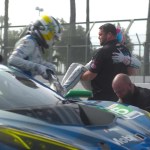Pirelli has introduced which tyre compounds might be accessible for all of the remaining rounds for the summer season break, with important modifications for the British and Belgian Grands Prix.
Whereas the picks for the Crimson Bull Ring and Hungaroring are the identical as final season (with the C3, C4 and C5 compounds taking the laborious, medium and gentle slots), Silverstone’s might be a step softer: C2, C3 and C4.
Commercial
Given the occasions of 2013, when tyre failures disrupted the race and prompted Pirelli to revert to a earlier carcass spec, and 2020, when Silverstone was internet hosting back-to-back races and went a step softer for the second race resulting in a spate of tyre delaminations late on, this can be a daring step at a circuit with high-speed corners which are demanding.
However the selection for Spa-Francorchamps is extra intriguing nonetheless.
After the opening rounds of the season panned out largely as one-stop races in dry circumstances, Pirelli floated the potential for having a niche between the chosen compounds so they don’t observe in sequence. Therefore in Belgium the medium and gentle would be the C3 and C4, as they had been final 12 months, however the laborious would be the C1 fairly than the C2.
The intention is to widen the efficiency differential between the laborious and medium decisions and put groups able the place the potential outcomes of one-stop versus two-stop methods are much less clear-cut.
Commercial
“In Silverstone, the problem might be to handle the medium, which for the previous two years truly served because the gentle,” stated Pirelli’s assertion.
Charles Leclerc, Ferrari SF-24
Charles Leclerc, Ferrari SF-24Ferrari
Ferrari
“Whereas in Spa, which can also be a dash occasion, these choosing the laborious, with the concept of stopping simply as soon as, must take into accounts the efficiency distinction that now separates the C1 from the C2, which was final 12 months’s laborious.”
Introducing the compound ‘step’ at a dash weekend is one other side Pirelli sees as producing intrigue as a result of it provides additional issues to tyre selection. However the focus stays on the grand prix – not essentially pushing groups in the direction of a two-stop technique, since that will possible end in most of them converging, however offering laborious decisions between one and two.
Commercial
“They [teams] all the time discover a approach to apply a technique on one cease,” Pirelli motorsport supervisor Mario Isola stated throughout the Emilia-Romagna Grand Prix weekend.
“It’s not that we’re attempting to push them to have a two-stop technique as a result of it is higher, it is extra motion, extra unpredictability and higher races – however with the three compounds which are so shut they all the time attempt to use the laborious and the medium to maneuver to a one-stop.”
Learn Additionally:
The speculation behind making the laborious compound more durable is that this makes a one-stop race doubtlessly slower – the laborious is extra resilient, so the drivers can doubtlessly push extra on it, however it should nonetheless be slower than a rival utilizing a soft-medium-medium two-stopper. However this has required extra simulations primarily based on efficiency information from the opening rounds as a result of the variations between compounds should match into a transparent ‘window’.
Too small a distinction between laborious and medium, and the one-stop stays the de facto selection. Too massive and the one-stop turns into untenable.
This is the reason the Belgian Grand Prix weekend is, in impact, a sensible take a look at of Pirelli’s concept.
To learn extra Motorsport.com articles .











